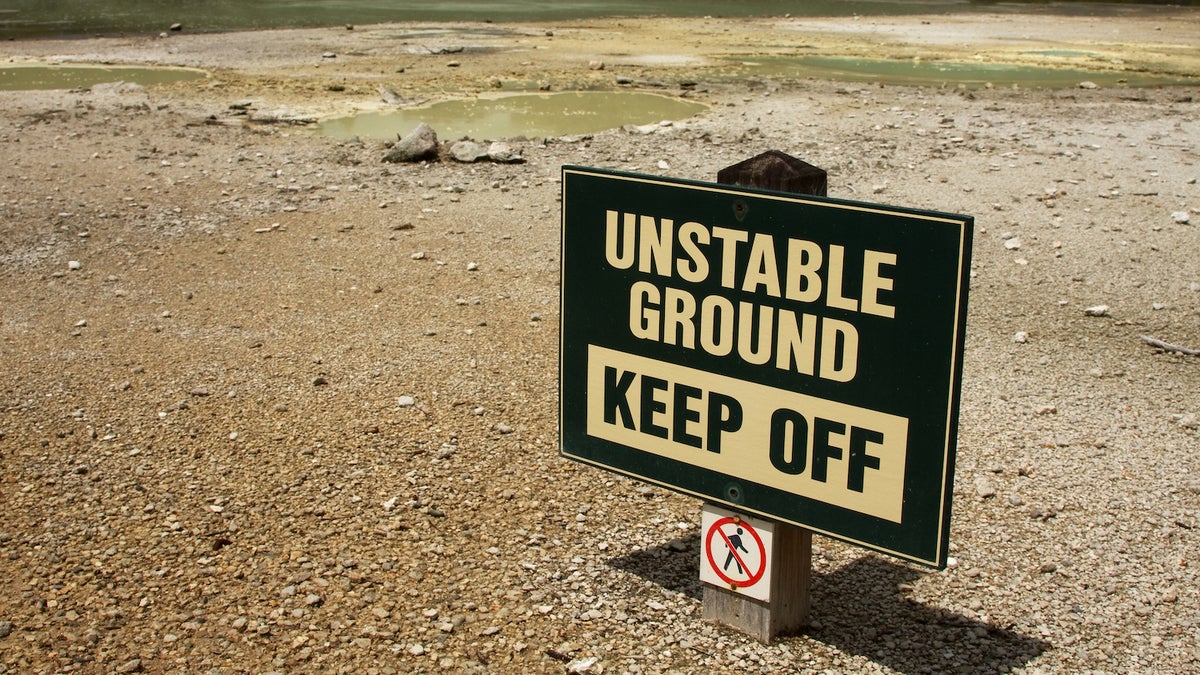Products You May Like
Get full access to Outside Learn, our online education hub featuring in-depth fitness, nutrition, and adventure courses and more than 2,000 instructional videos when you sign up for Outside+
Sign up for Outside+ today.
Read more: The Outdoors’ Most Spectacular Natural Phenomena, Explained
In his stand-up comedy special “New in Town,” comedian John Mulaney joked about the oversaturation of quicksand on childhood TV shows: “I always thought that quicksand was going to be a much bigger problem than it turned out to be. If you watch cartoons, quicksand is like, the third biggest thing you have to worry about in adult life, behind real sticks of dynamite and giant anvils falling on you from the sky.”
In real life however, quicksand isn’t the death trap it’s made out to be. Zion National Park Chief Ranger Daniel Fagergren says that Hollywood unnecessarily sensationalizes the danger of being trapped in sucking sand on a hike.
“It’s something to be aware of when you’re hiking, but maybe not something that should be outright feared,” he says. “Exposed edges or rattlesnakes or hypothermia are the things that actually can kill you.”
However, incidents do happen, especially when quicksand is paired with bad weather. In February 2019, Ryan Osmun spent 10 hours waist-deep in quicksand at Zion National Park. Snow dumped on him as he waited for his girlfriend to hike out of the canyon and find help. She had initially slid into quicksand, and as Osmun pulled her out, his leg slipped in and became cemented in place. Hours later, park rangers made it to Osmun and pulled him out. (Hear more about it on this episode of Backpacker’s Out Alive podcast.)

If you’re hiking in sandy, clay-filled areas that are perennially wet or near bodies of water, be aware of the ground you’re walking on. The more quicksand is agitated, the stickier it becomes. Fegergren says he has gone on group hikes where the leading hikers have walked over a patch of quicksand with no problem, but the dozen or so hikers that followed loosened the sand so much that those in the back of the group felt their boots sink into the earth.
“Too much water is a good thing when it comes to quicksand,” Fagergren says. “Also not enough water is also a good thing because it completely dries it out. It’s that rare mixture of just the right amount of water and sand and clay together that creates the formula for quicksand.”
The most important thing a hiker should know, Fagergren says, is how to escape from quicksand. It was very fortunate that Osmun was able to get help in 2019, but if he had been hiking alone, his fate might have been different. Dying from quicksand itself is rare, but if you are caught in it, you can still drown, become hypothermic, or die from exposure.
How to Escape From Quicksand
- The best way to defeat quicksand is by creating space within it. Allow water to trickle in the sand by making very slow movements with your body. Thrash around, and you’ll just sink into it; move very slowly so water can run between you and the sand and act as a lubricant. When you feel the sand loosen, begin to wiggle yourself out. Because your body is less dense than the clay you’re stuck in, you can float. Lean on your back, not your stomach in order to protect your airway. Once you get on your back and can get your legs partially out, you’ll be in a better position to work yourself free.
- Use a trekking pole to create space between your body and the quicksand and allow water to trickle into the gap; this will make it easier to slide out. You can also use your pole to probe questionable ground as you hike and test if it’s too soft to walk through.
